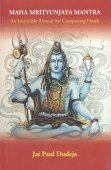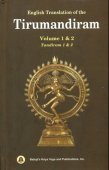Cidananda, Cit-ananda, Cidānanda, Cidanamda: 8 definitions
Introduction:
Cidananda means something in Hinduism, Sanskrit, Jainism, Prakrit, Marathi. If you want to know the exact meaning, history, etymology or English translation of this term then check out the descriptions on this page. Add your comment or reference to a book if you want to contribute to this summary article.
Alternative spellings of this word include Chidananda.
In Hinduism
Purana and Itihasa (epic history)
Source: archive.org: Shiva Purana - English TranslationCidānanda (चिदानन्द) refers to “whose form is knowledge-cum-bliss”, and represents an epithet of Śiva used in Sandhyā’s eulogy of Śiva, according to the Śivapurāṇa 2.2.6. Accordingly:—“[...] Directly perceiving the lord of Durgā she [viz., Sandhyā] eulogised the lord of the worlds: [...] Obeisance to Thee whose form is solitary, pure, luminous, free from illusion, knowledge-cum-bliss (cidānanda), naturally undecaying, eternal bliss, delighted at the outcome of truth and prosperity and productive of glory”.

The Purana (पुराण, purāṇas) refers to Sanskrit literature preserving ancient India’s vast cultural history, including historical legends, religious ceremonies, various arts and sciences. The eighteen mahapuranas total over 400,000 shlokas (metrical couplets) and date to at least several centuries BCE.
Shaktism (Shakta philosophy)
Source: Google Books: ManthanabhairavatantramCidānanda (चिदानन्द) refers to “bliss endowed with consciousness”, according to the Jayadrathayāmala: one of the earliest and most extensive Tantric sources of the Kālīkrama system.—Accordingly, as Bhairava teaches the Goddess about his inner state: “Established in the supreme state, I was penetrated by powerful meditation. Then (when this was happening) my supreme energy was awakened from the Root Wheel (kandacakra). Her nature the Great Consciousness [i.e., mahāsaṃvid-svarūpā] and delighting in bliss endowed with consciousness [i.e., sa-cidānanda-nandinī], she entered into the reality in the centre within the foundation, which is the Void of the Pulsing Union (saṃghaṭṭa). There in the centre, O daughter of the mountains, is the supreme light between the two, being and non-being. [...]”.

Shakta (शाक्त, śākta) or Shaktism (śāktism) represents a tradition of Hinduism where the Goddess (Devi) is revered and worshipped. Shakta literature includes a range of scriptures, including various Agamas and Tantras, although its roots may be traced back to the Vedas.
Yoga (school of philosophy)
Source: ORA: Amanaska (king of all yogas): A Critical Edition and Annotated Translation by Jason BirchCidānanda (चिदानन्द) refers to the “supreme bliss of (pure) consciousness”, according to the Kriyākramadyotikā pp. 139-40.—Accordingly: “[The Yogin] should fix his mind and breath on [a luminous Liṅga] situated in the middle of his eyebrows. Having dissolved in that [Liṅga] and become [one with] it, the Yogin gradually directs his mind to the void. When his mind has disappeared, the supreme bliss of [pure] consciousness (cidānanda) naturally shines forth. Thus, Samādhi, which is the basis of the [supernatural] powers beginning with minimization, has been taught”.

Yoga is originally considered a branch of Hindu philosophy (astika), but both ancient and modern Yoga combine the physical, mental and spiritual. Yoga teaches various physical techniques also known as āsanas (postures), used for various purposes (eg., meditation, contemplation, relaxation).
In Jainism
General definition (in Jainism)
Source: The University of Sydney: A study of the Twelve ReflectionsCidānanda (चिदानन्द) refers to “consciousness and bliss”, according to the 11th century Jñānārṇava, a treatise on Jain Yoga in roughly 2200 Sanskrit verses composed by Śubhacandra.—Accordingly, “This self is, by nature, different from the body, etc., consisting of consciousness and bliss (cidānanda-maya), pure and united with mundane bondage. In reality, there is no unity of the forms of matter and consciousness with regard to mundane bondage and the connection of these two is without a beginning like gold and a flaw in gold”.

Jainism is an Indian religion of Dharma whose doctrine revolves around harmlessness (ahimsa) towards every living being. The two major branches (Digambara and Svetambara) of Jainism stimulate self-control (or, shramana, ‘self-reliance’) and spiritual development through a path of peace for the soul to progess to the ultimate goal.
Languages of India and abroad
Marathi-English dictionary
Source: DDSA: The Molesworth Marathi and English Dictionarycidānanda (चिदानंद).—a S (Of whom Mind is the gem; Pure intelligence; delighting in knowledge, "dwelling in light" &c.) Epithets of God.
Marathi is an Indo-European language having over 70 million native speakers people in (predominantly) Maharashtra India. Marathi, like many other Indo-Aryan languages, evolved from early forms of Prakrit, which itself is a subset of Sanskrit, one of the most ancient languages of the world.
Sanskrit dictionary
Source: Cologne Digital Sanskrit Dictionaries: Aufrecht Catalogus CatalogorumCidānanda (चिदानन्द) as mentioned in Aufrecht’s Catalogus Catalogorum:—Svarūpavimarśinīṭīkā.
Source: Cologne Digital Sanskrit Dictionaries: Monier-Williams Sanskrit-English DictionaryCidānanda (चिदानन्द):—[=cid-ānanda] [from cid > cit] ‘thought and joy’, in [compound]
Sanskrit, also spelled संस्कृतम् (saṃskṛtam), is an ancient language of India commonly seen as the grandmother of the Indo-European language family (even English!). Closely allied with Prakrit and Pali, Sanskrit is more exhaustive in both grammar and terms and has the most extensive collection of literature in the world, greatly surpassing its sister-languages Greek and Latin.
Kannada-English dictionary
Source: Alar: Kannada-English corpusCidānaṃda (ಚಿದಾನಂದ):—[noun] the philosophic combination of the pure Consciousness and the supreme Bliss, as the nature of the Absolute.
Kannada is a Dravidian language (as opposed to the Indo-European language family) mainly spoken in the southwestern region of India.
See also (Relevant definitions)
Partial matches: Cid, Cit, Ananda, Cita.
Starts with: Cidanamdarupa, Cidananda bhikshu, Cidananda sarasvati, Cidananda yogin, Cidanandabrahmavilasa, Cidanandadashashloki, Cidanandakelivilasa, Cidanandamaya, Cidanandashrama, Cidanandashtaka, Cidanandastavaraja, Cidananday.
Ends with: Saccidananda.
Full-text: Cidanandamaya, Cidanandastavaraja, Cidanandadashashloki, Saccidananda, Cidanandashrama, Shaktitattva, Cidananda yogin, Cidananda sarasvati, Caccitanantam, Atmaprakashavyakhya, Svarupavimarshini, Cidananda bhikshu, Totakavyakhya, Aprakrita-madana, Cit, Brahmarupa, Avahana, Brahman, Nandini, Gitagovinda.
Relevant text
Search found 42 books and stories containing Cidananda, Cit-ānanda, Cid-ānanda, Cit-ananda, Cidānanda, Cid-ananda, Cidanamda, Cidānaṃda; (plurals include: Cidanandas, ānandas, anandas, Cidānandas, Cidanamdas, Cidānaṃdas). You can also click to the full overview containing English textual excerpts. Below are direct links for the most relevant articles:
Brihad Bhagavatamrita (commentary) (by Śrī Śrīmad Bhaktivedānta Nārāyana Gosvāmī Mahārāja)
Verse 1.3.45 < [Chapter 3 - Prapañcātīta (beyond the Material Plane)]
Verse 2.2.176 < [Chapter 2 - Jñāna (knowledge)]
Verse 2.4.93 < [Chapter 4 - Vaikuṇṭha (the spiritual world)]
Bhakti-rasamrta-sindhu (by Śrīla Rūpa Gosvāmī)
Verse 2.1.187 < [Part 1 - Ecstatic Excitants (vibhāva)]
Verse 3.1.16 < [Part 1 - Neutral Love of God (śānta-rasa)]
Verse 2.1.38 < [Part 1 - Ecstatic Excitants (vibhāva)]
Sahitya-kaumudi by Baladeva Vidyabhushana (by Gaurapada Dāsa)
Text 9.28 < [Chapter 9 - Ornaments of Sound]
Text 9.44 [zig-zag diagram] < [Chapter 9 - Ornaments of Sound]
Text 2.12 < [Chapter 2 - The Natures of Words (śabda)]
Shrimad Bhagavad-gita (by Narayana Gosvami)
Verse 9.11 < [Chapter 9 - Rāja-guhya-yoga (Yoga through the most Confidential Knowledge)]
Verse 9.13 < [Chapter 9 - Rāja-guhya-yoga (Yoga through the most Confidential Knowledge)]
Verse 4.11 < [Chapter 4 - Jñāna-Yoga (Yoga through Transcendental Knowledge)]
Chaitanya Bhagavata (by Bhumipati Dāsa)
Verse 2.10.36 < [Chapter 10 - Conclusion of the Lord’s Mahā-prakāśa Pastimes]
Verse 1.17.17 < [Chapter 17 - The Lord’s Travel to Gayā]
Verse 2.10.137 < [Chapter 10 - Conclusion of the Lord’s Mahā-prakāśa Pastimes]
Related products

